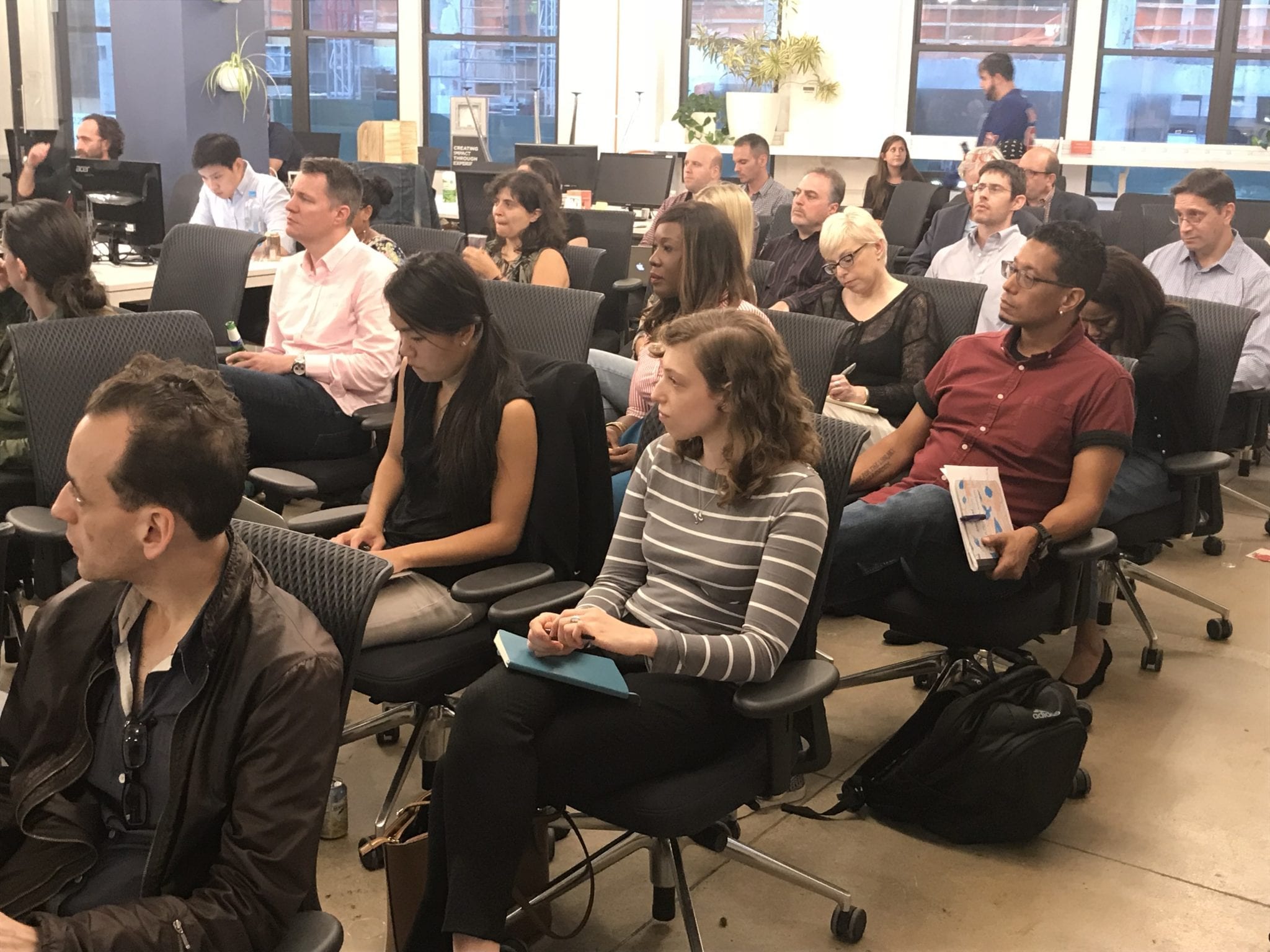|
Getting your Trinity Audio player ready...
|
Bibblio and Sovrn brought the Future of Media and Publishing meetup back to New York City last month. They invited a group of future-oriented publishers to discuss how the industry is changing and what they’re doing to adapt and thrive.
Below are the key takeaways from the panel discussion, featuring Carey Polis (Digital Director from Bon Appetit), Joe LaFalce (VP, Business Development at Popsugar) and Daniel Stedman (CEO & Co-Founder of Brooklyn Magazine and Northside Media). You can find Bibblio’s full in-depth writeups here: Part I and Part II.
Where’s traffic coming from?
Getting 50%+ of traffic from search seems to be in the normal range for high-quality vertical publications. Social media traffic has been affected by the Facebook algorithm change, but the panelists weren’t concerned about it. It’s either been a case of volatility more than decline, or it’s actually been a positive development, as relying on Facebook less has allowed editors to concentrate on quality rather than attracting clicks.

Other categories that drive a significant amount of traffic are newsletters and strategic partners featuring a publishers’ content – it’s also not just driving direct website traffic that’s important. At Popsugar, they’re looking to build specific communities on social platforms as well, as community members often translate into loyal site users later on.
What are they measuring?
Loyalty is now the key measure – Popsugar’s most important metric is returning visitors as a percentage of total traffic, and Bon Appetit’s is ‘loyal visitors’, which means somebody who makes at least four visits to the site a month. For Northside Media, engaged minutes is what matters, but the theme is still the same – a movement away from simply counting clicks to tracking indicators that visitors are invested in your content.
Which areas are driving revenue growth?
Video has led to the biggest increase in revenue for Bon Appetit, and it’s gone from a small part of their revenue to a significant contributor in just two years. A lot of this growth is coming from YouTube, and working with sponsors making white-labelled content. A significant development was finding out that their own editors are great on camera, which has the added benefit of making video more authentic. To achieve that authenticity you have to be careful about matching brands with personalities well. If you get this wrong you lose audiences’ trust.
For Popsugar, the majority of advertising revenue comes from their branded and native content studio, The Bakery. This content is then distributed across social. Display revenue is declining for them, which isn’t a surprise in the current climate. It’s high margin, but it doesn’t drive the repeat business that the branded content studio does, and that’s an increasing priority.
New opportunities for monetisation?
Popsugar has embraced the idea that content is at the

Another example of content enabling revenue for Bon Appetit is affiliate promotions. This works particularly well for a vertical like cooking because of the opportunity to recommend products with content. Trust is vital for this to work, so they always disclose affiliate products, and their editors are experts who don’t recommend anything that they don’t believe in. It’s worth noting that it’s hard to monetize in this way in a vertical if you don’t already have the expertise to give you authority.
The evolution of Church and State?
The ‘Church and State’ separation of editorial and commercial has gradually broken down, and editors are often required to think about commercial issues now. That means it’s very important to keep an eye on your moral compass. This isn’t for purely ethical reasons: it’s important to keep content aligned with what editors believe in. You damage the product if making money takes priority over authenticity and building great relationships with readers. The panel
What makes for success in branded content?
It takes skill to get the most out of branded content, and there are times when you need to challenge your partners. Publishers are experts in their own content and audience, they’re the ones that know what work, and sometimes they need to stand up to brands. It’s key to make the editorial message and the brand’s message align authentically, and trust between the parties is essential. It’s also important to communicate clearly, especially on what constitutes success, e.g. in terms of metrics. An example of where this can be hard is with events, as it’s not easy to measure the effect of a brand’s sponsorship.
How do you choose which social channels to use?
Unless you have a lot of resources, it’s important to focus: e.g. Bon Appétit are not on Snapchat. Choose the channels that really align with your values and content, and go all in. Popsugar were also focussed and strategic within their chosen channel – they picked pop culture and entertainment as their niche and spent a few years building brand equity before trying to expand into being a general lifestyle play. Young brands can also gain a lot from working with a strategic partner: they can distribute your content, swap Facebook stories etc. Partnerships
What’s the situation with subscription?
Subscription is not really part of Bon Appetit’s revenue picture, even though they’re a successful vertical publisher. This is partly down to the nature of their content – there was a feeling that there are too many recipes on the internet to be able to charge for access to theirs. Audiences can easily find alternatives elsewhere; it’s much easier to charge for highly differentiated content. However, the New York Times did put a paywall around their cooking site
Popsugar’s approach to subscription is to base it around a higher level of service: they don’t want to put the main site behind a paywall and take away things they’ve been giving to their audience for free. For a brand like
To hear more insights like these in person join one of the


